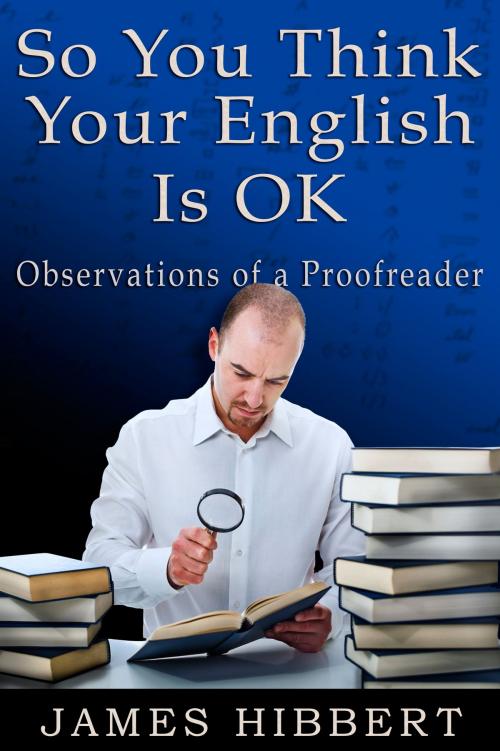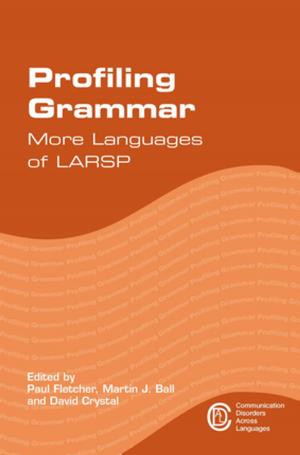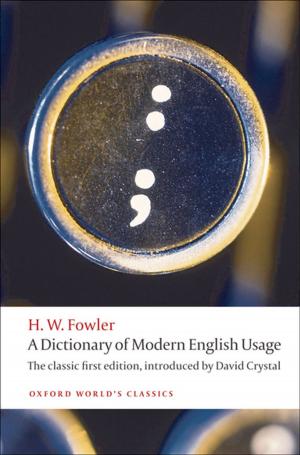So You Think Your English Is OK
Observations of a Proofreader
Nonfiction, Reference & Language, Language Arts, Writing & Publishing, Editing & Proofreading, Grammar| Author: | James Hibbert | ISBN: | 9780992769703 |
| Publisher: | James Hibbert | Publication: | February 28, 2014 |
| Imprint: | James Hibbert | Language: | English |
| Author: | James Hibbert |
| ISBN: | 9780992769703 |
| Publisher: | James Hibbert |
| Publication: | February 28, 2014 |
| Imprint: | James Hibbert |
| Language: | English |
Most books written by grammarians contain errors. So do many of those written by others who tell us how to write and how to speak. Those writers sometimes seem not to grasp the ideas, not to understand the grammatical points, that they are writing about; they do not understand as fully as they would have us believe they do. This book points out many of those errors; you will find well-known names and well-known books here. This book also discusses points of grammar and usage that people are hesitant about, so if there are areas where you feel unsure, you will almost certainly find help here. If you re confident in your use of English, you might find ideas and arguments that make you more so. This book subjugates the subjunctive, tames tenses, advises on adverbs and pronounces on pronouns. If you are just interested in the English language and like to see what others have to say on particular topics, there is much here to think about. This is not a textbook; it is not intended to teach English grammar in a formal way. It is written in a conversational tone. Many of the topics are covered in a single paragraph. Common sense overrules rules in this book. Idiom is defended against language vandals. No doubt many will disagree with some of the opinions expressed, but the same readers may find new ways of looking at particular points of grammar and usage. If you consider it correct to say 'teaspoonsful' or if you think there is a saying about someone putting their foot in their mouth, you need this book. Sometimes the author strays from grammar and usage to comment on things he finds interesting or irritating. For example, language peculiar to television, radio, and the press is remarked on. The author's English is British English, but grammar and usage do not vary much across the English-speaking world, and what differences there are between countries, regions, and social groups make the language even more fruitful as a source of topics to debate or just to comment on.
Most books written by grammarians contain errors. So do many of those written by others who tell us how to write and how to speak. Those writers sometimes seem not to grasp the ideas, not to understand the grammatical points, that they are writing about; they do not understand as fully as they would have us believe they do. This book points out many of those errors; you will find well-known names and well-known books here. This book also discusses points of grammar and usage that people are hesitant about, so if there are areas where you feel unsure, you will almost certainly find help here. If you re confident in your use of English, you might find ideas and arguments that make you more so. This book subjugates the subjunctive, tames tenses, advises on adverbs and pronounces on pronouns. If you are just interested in the English language and like to see what others have to say on particular topics, there is much here to think about. This is not a textbook; it is not intended to teach English grammar in a formal way. It is written in a conversational tone. Many of the topics are covered in a single paragraph. Common sense overrules rules in this book. Idiom is defended against language vandals. No doubt many will disagree with some of the opinions expressed, but the same readers may find new ways of looking at particular points of grammar and usage. If you consider it correct to say 'teaspoonsful' or if you think there is a saying about someone putting their foot in their mouth, you need this book. Sometimes the author strays from grammar and usage to comment on things he finds interesting or irritating. For example, language peculiar to television, radio, and the press is remarked on. The author's English is British English, but grammar and usage do not vary much across the English-speaking world, and what differences there are between countries, regions, and social groups make the language even more fruitful as a source of topics to debate or just to comment on.















